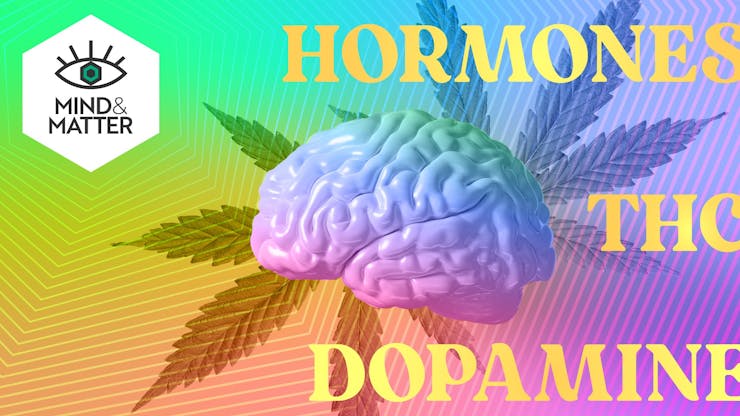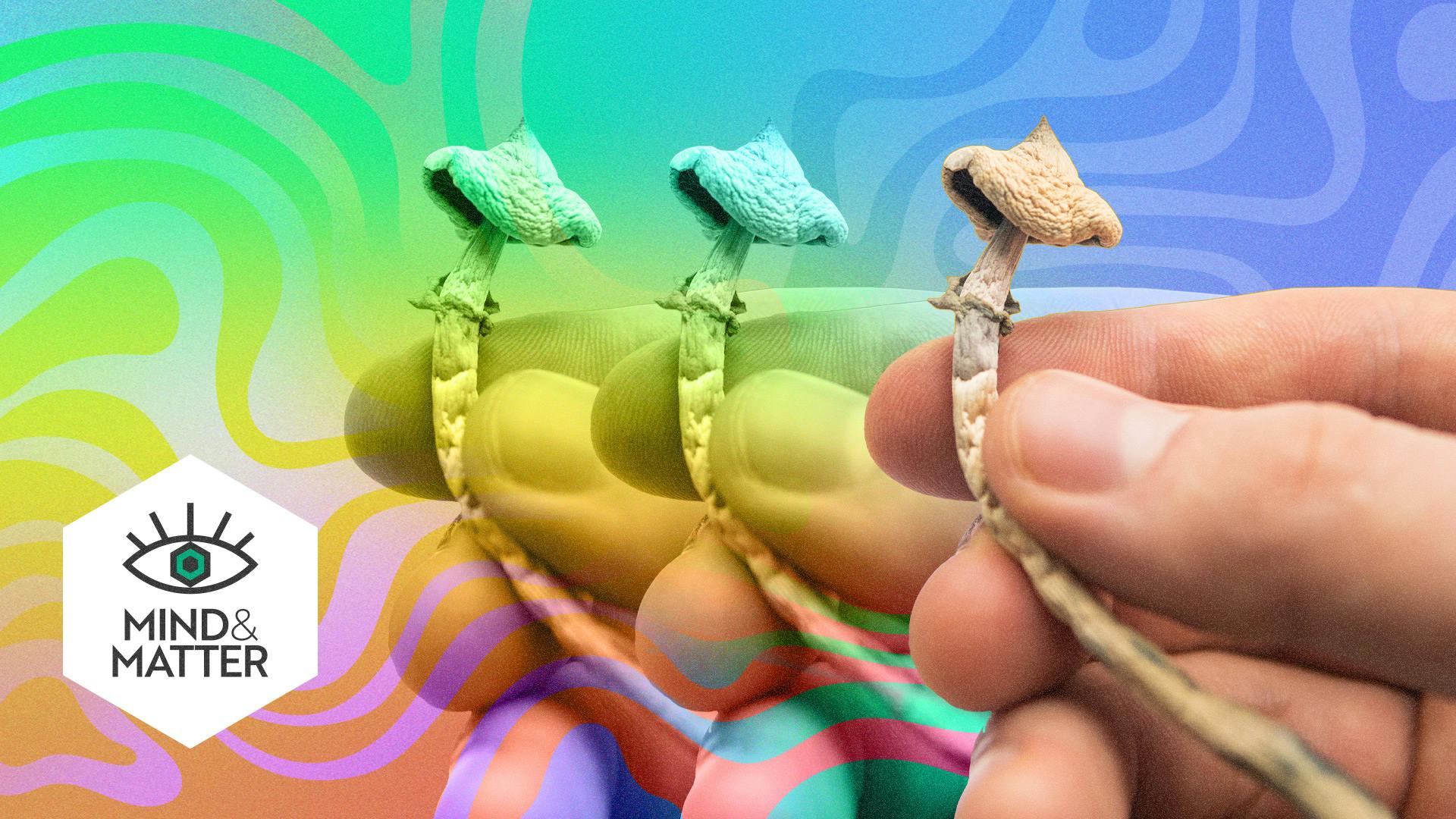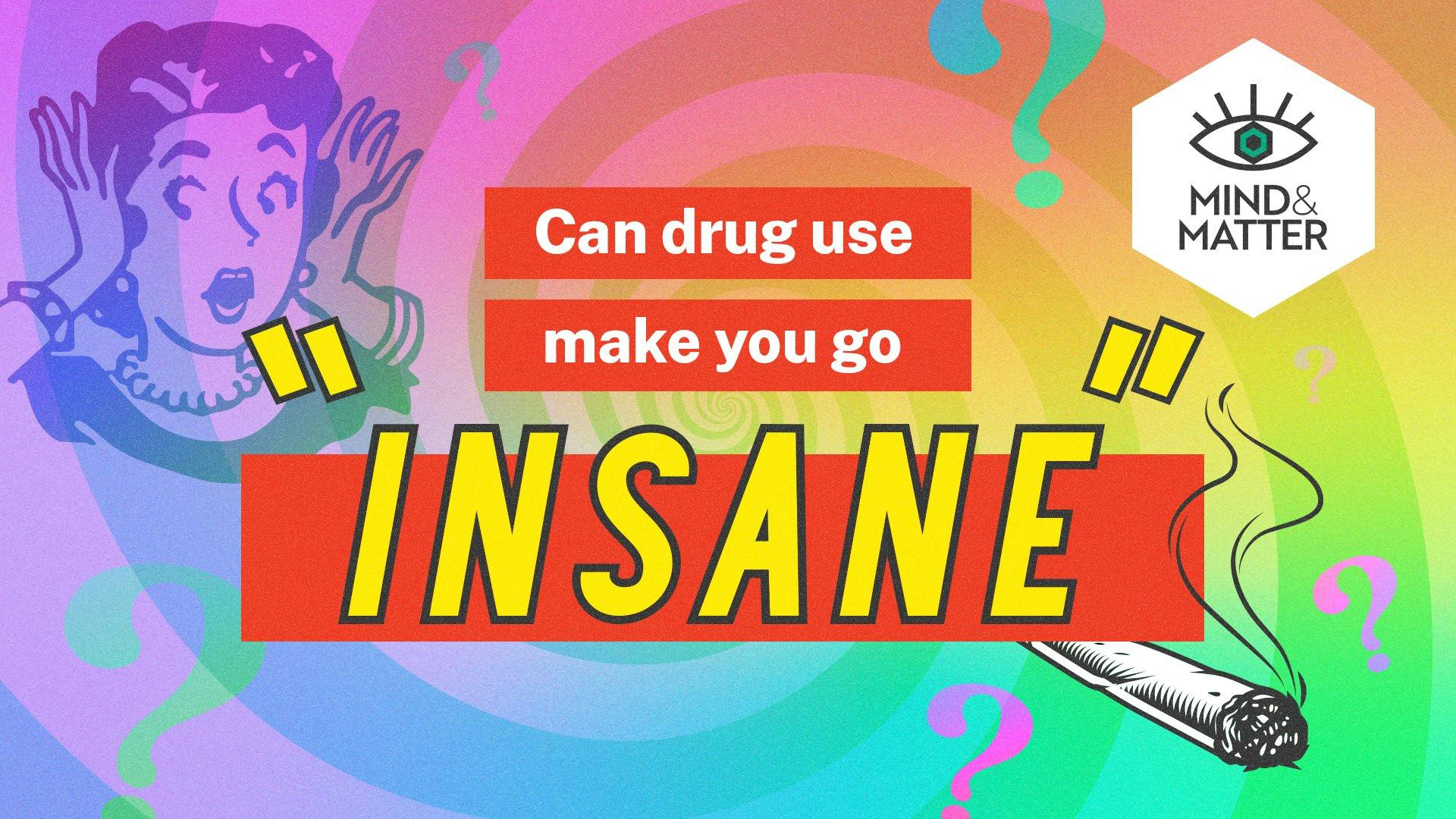‘Mind & Matter’ is a monthly column by Nick Jikomes, PhD.Click here to read more of his work or listen to the Mind & Matter podcast.
How does cannabis, and THC in particular, impact brain development? This question is relevant to everyone, especially potential mothers. Here are the questions we’ll tackle in more detail:
- Will THC exposure during prenatal development (pregnancy) influence brain development?
- Will THC exposure during prenatal development affect an animal’s sensitivity to cannabis and other substances?
- Will THC exposure during development affect an animal’s future behavioral tendencies?
- Are any of THC’s developmental effects reversible after birth?
The endocannabinoid system develops early
Two things must be true for THC to influence prenatal brain development. First, the body’s natural endocannabinoid system (ECS), especially CB1 receptors, must be “turned on.” Second, in mammals, THC must be able to cross the placental barrier.
The ECS “turns on” very early in prenatal development. As development proceeds, the pattern of expression changes–where and how much things like CB1 receptors show up. The ECS is not simply lying dormant until birth. It plays an important role in the proper unfolding of brain development. When scientists mess with the ECS during early brain development in animals, nervous system development is altered. The viability of the embryo can even be compromised.
What crosses the placental barrier?
In mammals, the growing animal is protected by the placenta, an organ regulating nutrient, gas and waste exchange between the maternal and fetal circulatory systems. The placental barrier, a semi-porous membrane, regulates the transfer of compounds into and out of the placenta. It acts as a filter, allowing a subset of the molecules flowing through the mother’s bloodstream to enter the in utero environment.
The physical properties of drugs determine how readily they cross the placental barrier and can be classified into three groups:
- “Complete transfer” drugs cross into the placenta, reaching similar concentrations in fetal and maternal blood. Example: many anesthetics and opioids.
- “Exceeding transfer” drugs reach higher concentrations in fetal compared to maternal blood. Example: ketamine.
- “Incomplete transfer” drugs are unable to cross the placenta completely. Concentrations in fetal blood will be lower than in maternal blood. Example: many paralytics.
In general, fat-soluble drugs undergo complete placental transfer. This includes cannabinoids like THC, which will enter the in utero environment and interact with the developing endocannabinoid system. The earlier the exposure, the higher the dose, or the more frequent the exposure, the greater the influence on development.
Learn more about cannabis science, directly from the experts.
Cannabis use during pregnancy
In Western societies, the prevalence of cannabis use among pregnant women ranges from 3% to 16%. The most common reasons for consumption are to relieve symptoms of anxiety and morning sickness. (THC is an antiemetic, a drug that reduces nausea and vomiting). Cannabis may be able to provide acute symptom relief for some women, but if THC exposure has lasting effects on the developing brain, an abundance of caution is warranted.
Shop highly rated dispensaries near you
Showing you dispensaries nearI spoke with Dr. Steve Laviolette, a developmental neuroscientist who studies the effects of drugs on brain development, about the effects of prenatal THC exposure:
Areas of effect: Reward processing, and hormones
Let’s go into more detail on two areas where prenatal THC exposure may have lasting effects on brain function:
- Reward processing and drug sensitivity
- Hormones and behavior
As we’ll see, these two things are intimately connected.
There’s a network in the brain called the “reward pathway” or “dopamine motive system.” It’s an interconnected set of areas important for processing information about things that we like and want. It’s crucial for regulating motivation and cognition in general, not just reward processing. A reward can be anything from a psychoactive drug to palatable food or notifications on your smartphone. THC and other rewards elevate dopamine levels in this brain network.
A drug’s addiction liability depends on exactly how it works within the brain’s reward pathway. But that’s not all. Some people are naturally more sensitive to rewards and prone to addiction than others. This is largely due to variation in how the brain’s reward circuitry gets wired up and refined by experience, especially early life experience. Some of this variation comes from what gets put into our bodies, including what we ingest before and after birth.
Constructing the brain’s reward pathway
One way THC and other rewarding substances influence brain development is by impacting how the reward pathway gets put together–how sensitive we will be to rewards and therefore how readily reward-seeking behavior will manifest. Endocannabinoid receptors are expressed widely throughout the brain, but they are especially abundant in the reward pathway. Thus, THC exposure during early development can have a significant impact on reward processing, motivation, and cognition later in life.
In general, exposure to rewarding drugs during development changes how the dopamine reward pathway works later in life. One way this can manifest is by sensitizing the brain to rewards. This effect is not drug-specific. Exposing adolescent rodents to THC, for example, renders them more sensitive to opioids. When female rats are given daily, low doses of THC during pregnancy, their male offspring respond to THC differently during adolescence and their neurons release more dopamine in response to THC ingestion. The cause-and-effect relationships that can be determined in animals echo correlations generally seen in humans for early life THC exposure and reward sensitivity.
The effects of THC on the development of this dopamine reward system are not confined to reward processing. As Dr. Laviolette explained: “It’s complicated because dopamine does a lot of things. I would suggest that the implications are that there will be a dysregulation of emotional processing in general, that would extend beyond just sensitivity to drug rewards. For example, abnormal dopamine signals could make someone more sensitive to negative experiences as well, which would be more linked to depression.”
Because dopamine is doing so much in the brain, there can be consequences beyond how the brain processes information about rewards if dopamine circuits become dysregulated. Animal research indicates that cannabinoid exposure early in development can affect how dopamine neurons mature and emotional behaviors (e.g. anxiety) later in life. This is unsurprising given how intertwined the endocannabinoid system is with dopamine, serotonin, and other major neuromodulatory systems of the brain.
How hormones affect behavior
We all have an intuitive notion that hormones influence behavior. When people say things like, “Teenagers are filled with hormones,” it’s usually in reference to the behavioral unpredictability and emotional volatility associated with teens. Even if you’re not a developmental biologist, you probably have a vague notion that hormones somehow regulate behavior.
That intuitive notion isn’t wrong. Giving animals (or people) exogenous hormones, or directly stimulating hormone-sensitive neurons in animals, can alter behavior in dramatic ways. By manipulating these things, scientists can cause animals’ social and reproductive behavior to change, alter stress and metabolic responses, and more. Natural changes in hormone levels throughout life are directly tied to changes in behavior. As any new mother can attest, the mother-infant bond comes bundled with strong protective urges–changes which are sculpted by systematic fluctuations in neurohormones that rewire the brain.
Hormones like estrogen and testosterone affect behavior by traveling to the brain, where they influence specific hormone-sensitive neurons. This changes how neurons “talk” to each other. Scientists can dramatically influence the behavior of animals by artificially stimulating specific neurons in the brain, such as those sensitive to estrogen:
When sex hormone levels change at different phases of life, such as during puberty or pregnancy, it alters the activity patterns of neurons. This stimulates the rewiring of brain circuits, culminating in behavioral changes. This should be unsurprising. At different stages of life, different patterns of behavior are needed. Sex hormones are a tool the body uses to sculpt the brain to support behavior change.
THC and hormones
What does this have to do with THC? Plenty.
The endocannabinoid system is important for many aspects of brain development, not just “reward neurons.” This includes circuits responsive to sex hormones that regulate sex-typical behaviors—that is, behavioral tendencies that vary between males and females.
When scientists provide unnaturally high levels of stimulation to CB1 receptors during prenatal development, using THC or other drugs, it impacts brain development and causes subsequent changes in behavior. Developmental neurobiologist Dr. Margaret McCarthy described the results of this kind of work:
Dr. McCarthy’s research in rats has found that early-life THC exposure tends to have masculinizing effects on the brain. The behavior of juvenile rodents becomes more male-like after they are exposed to THC as newborns. The behavioral effects of drugs like THC can be similar to the effects of testosterone. When newborn female rodents are exposed to either extra testosterone or THC, their subsequent behavior changes in similar ways. These effects can differ depending on timing. When exposure occurs at a different developmental time point, the behavioral consequences are often different.
Cannabinoids, THC, and neurosteroids
The connection between THC and hormones is not limited to development.
“You are what you eat” is a common saying capturing a basic biological truth: Your body is built from what’s put into it. Change what you ingest and you will change your body.
An important class of molecules in the body are steroid hormones, including the stress hormone cortical and sex hormones like testosterone and estrogens. Cholesterol is a dietary component which serves as a building block for these hormones. From cholesterol, the body makes pregnenolone, a precursor to most steroid hormones, including those synthesized in the brain, which are known as neurosteroids.
Pregnonolone: A really interesting drug
Lots of interesting biology is connected to pregnenolone. It’s an FDA-approved drug. You can even buy it at the store. It ties into the endocannabinoid system in a couple ways. It’s an inhibitor of the CB1 receptor, a property it shares with CBD. The ingestion of THC increases pregnenolone levels in the brain. Most rewarding drugs (e.g. cocaine, morphine, nicotine) can increase pregnenolone levels in the brain, but THC increases pregnenolone even more. This increase is higher in certain brain areas, including those tied to the dopamine reward pathway.
Because THC’s psychoactive effects come from the activation of CB1 receptors, increased pregnenolone levels dampen them. Giving rodents pregnenolone before giving them THC diminishes many of THC’s effects. Give an animal THC, and its dopamine neurons release more dopamine. The animal will also tend to repeat behaviors that result in getting a THC reward. Giving those same animals pregnenolone ahead of time tends to dampen both the dopamine release and the behavior repetition.
What about animals exposed to THC prenatally? If they show developmental changes to their dopamine reward system, could a CB1 inhibitor like pregnenolone reverse those changes after birth?
Can pregnenolone reverse effects of THC exposure?
To assess whether pregnenolone can reverse any of the developmental changes induced by prenatal THC exposure, scientists did the following experiment in rats: Give pregnant females THC or an inert substance (saline), measure differences in dopamine neurons between the two groups, and then repeat this after giving pregnenolone to juvenile offspring (once per day, for nine days).
Compared to control animals, researchers found that juvenile rats exposed to THC in the womb had dopamine neurons that behaved differently. Those neurons were more excitable, the way they changed in response to stimulation was altered, and they released higher levels of dopamine in response to THC. Those effects were seen in male offspring specifically, likely due to sex differences in how this system develops in males vs. females.
Giving pregnenolone to juvenile rats after birth resulted in a reversal of all those changes. After pregnenolone treatment, the rats prenatally exposed to THC had dopamine neurons that behaved just like those of control rats not exposed to THC. Pregnenolone seemed to have no significant effects on the dopamine neurons of control animals, indicating that it wasn’t causing extra developmental changes of its own (at least in terms of dopamine neuron function).
Interesting study results, but…
These results are interesting because they suggest pregnenolone may be a non-invasive way of correcting some of the developmental abnormalities caused by prenatal THC exposure.
We can never be sure how animal research will translate to humans until the right clinical trials are conducted, but many of the body’s core physiological systems, including the dopamine reward pathway and endocannabinoid system, show a high degree of evolutionary conservation across species. Because pregnenolone is already an FDA-approved drug known to be well-tolerated and devoid of major side effects, it should be easier to test its effects in humans than it would be for other drugs.
Exercise caution, consider a 9-month THC break
Does this mean that cannabis consumption by pregnant women carries little risk, as long as you give your kid some pregnenolone after they’re born? No.
While the rodent studies discussed above showed that pregnenolone could reverse many of THC’s developmental effects on dopamine neurons, that doesn’t mean there are no other developmental abnormalities that may have gone unnoticed or uncorrected.
The endocannabinoid system is a crucial part of the development and function of many physiological processes in the body, not just specific circuits in the brain. As we’ve seen here, it’s intertwined with the brain’s dopamine reward pathway and neurosteroid systems critical for behavior regulation. Stimulating endocannabinoid receptors outside of their natural physiological range is likely to have widespread effects on development. As with alcohol, nicotine, or any other psychoactive substance, the wisest bet for pregnant women is probably a nine-month hiatus.
To learn more about Mind & Matter and listen to the podcast episodes that inspired this article, visit this link.







